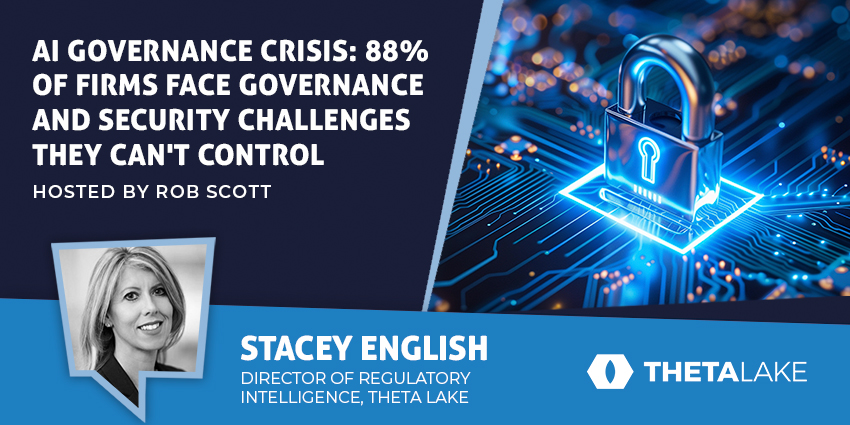If you’ve ever tried to explain to a regulator why your voice archive still lives on a creaky, on-premises box from the early 2000s, you know the feeling. It’s a bit like trying to convince your kids that DVDs are “retro cool.”
Across the enterprise landscape, organizations are continuing to adopt cloud voice for all right reasons. From turrets to Teams, communication has been fundamentally rewired. Voice is no longer a standalone channel, it’s now embedded in a rich ecosystem of chat, screen shares, video conferencing, and file collaboration that continue seamlessly into Teams or Zoom calls. Each involving multiple stakeholders subject to their own set of compliance obligations.
And yet, one thing keeps dragging behind like a stubborn anchor: legacy compliance infrastructure.
The Elephant in the Server Room
The future of voice compliance can’t be built on yesterday’s model. Legacy systems drive up capital and operational costs through endless storage needs, manual administration, and time-consuming audit and investigation processes. The world has changed — voice is no longer a siloed recording or archiving task. It’s part of a connected, always-on conversation that spans chat, video, and collaboration tools. Legacy infrastructure simply can’t keep pace with the need for integrated DCGA platforms that unify voice compliance within today’s modern communication environments. The result? Higher costs, greater compliance risk, and mounting pressure to maintain outdated, end-of-life systems that no longer deliver value.
“Voice compliance hasn’t just fallen behind; it’s stuck in another decade,” says Garth Landers, Director of Global Product Marketing at Theta Lake. “We’re seeing enterprises move to cloud-first voice solutions, but their compliance infrastructure is still operating on on-premises assumptions. The result is friction, inefficiency, and unnecessary risk.”
In other words, we’ve entered the EV age of communication, but some organizations are still pumping diesel into their compliance engines.
Voice in the Mesh
Here’s the awkward truth: voice can’t live in isolation anymore. A Teams conversation might start as a chat message, spin into a video conference, and then produce an AI-generated summary that gets pasted into an email or CRM note. These aren’t separate conversations; they’re one continuous digital dialogue.
But when compliance tools treat voice as a separate silo, blind spots appear. Transcripts, recordings, and even AI-generated meeting notes fall between the cracks. Regulators don’t care that your archive can’t handle it; they just expect you to be able to prove exactly what was said, by whom, and when.
“Voice is now part of a wider compliance mesh,” adds Dan Nadir, Chief Product Officer at Theta Lake. “You can’t protect one channel and ignore the rest. Governance has to be unified, voice, chat, video, and AI-generated content, all managed with the same policies and visibility.”
It’s not about overhauling everything overnight, but it is about recognizing that voice no longer gets a free pass as a standalone system.
The Legacy Trap
Legacy compliance systems weren’t built for the cloud and using them as “bolt-on” voice recorders for modern communication platforms is the digital equivalent of duct tape. The legacy approach cannot scale, leaving firms with the complexity and cost of managing these outdated infrastructure platforms. This growing burden is making it unsustainable for IT and compliance to keep pace with the accelerating evolution of today’s communication landscape. Legacy systems can capture a call, maybe even store it securely, but they struggle with modern realities like real-time transcription, multi-platform analytics, or AI inspection.
That creates reconciliation gaps, poor visibility, and sleepless nights for compliance officers trying to prove full capture coverage.
“A voice-only archive today is like a VHS player in a Netflix world, technically functional, but try explaining it to a regulator,” says Jack Foster, SVP of Global Marketing at Theta Lake. “Compliance tools have to evolve at the same pace as communications technology; otherwise, you’re just creating risk in slow motion.”
The Cloud-Native Future
The answer, according to the experts, lies in unified, cloud-native compliance. Instead of separate archives for voice, chat, and video, enterprises need a single, API-driven governance layer that captures everything, across Teams, Zoom, and beyond, in context.
Modern compliance isn’t about collecting data; it’s about connecting it. It’s about AI-driven transcription that identifies sensitive phrases, detects regulatory red flags in real time, and gives IT and compliance teams shared visibility through a single pane of glass.
Of course, it’s not easy. Migrating from legacy infrastructure, aligning departments, and retraining teams take time. But the alternative, staying locked into systems that can’t keep up, is far riskier.
Because today, compliance isn’t just about avoiding fines. It’s about enabling innovation safely.
The Bottom Line
Cloud voice is here, and it’s reshaping enterprise communication. The only question is whether your compliance stack is ready to move with it.
Supporting this new, multifaceted communication landscape requires financial firms to maintain a holistic, real-time view of their regulated users. Getting it right isn’t just operationally important, it’s critical to managing risk and meeting growing regulatory expectations.
Legacy tools may still get you from A to B, but they can’t help you govern modern cloud voice with the visibility, accuracy, and unification regulators now expect. That kind of fragmented journey creates gaps, blind spots, and compliance risk.
And in the words of one compliance officer I spoke to recently, “That’s not a journey you want to explain to the regulator.”







